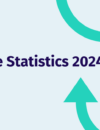
Did you know almost 75% of UK workers feel age discrimination is common in the workplace? Interestingly, it’s a problem at both ends of the scale. A recent study found three quarters of those aged between 25 and 34 feel discriminated against for being too young, while half of those aged 55-plus reported having also faced prejudice.
Getting to know the generations
Age discrimination isn’t only illegal; it’s damaging to business success. Each generation brings their own unique set of strengths and experiences. Baby boomers are loyal, work-oriented and goal-driven; gen X are self-sufficient, resourceful workers with a ‘work hard, play hard’ mentality; millennials want meaningful work and are prepared to challenge the status quo. Gen Zs are only just beginning to enter the workplace, but it’s likely these digital natives will be competitive and motivated by security.
Understanding – and adapting to – the typical characteristics of each group should be a business priority to ensure a skilled and diverse workforce. Start-ups, for example, often worry that ‘grey hairs’ won’t be able to put in the long hours required. In reality, baby boomers tend to be the most work-centric and committed age group of them all.
How to create an age-friendly workplace
Company culture is a good place to start when considering how to recruit and retain a multi-generational workforce. Successful projects, for example, are often celebrated with a night at the pub; unintentionally excluding employees with commitments such as looking after children. Simple alternatives, such as team lunches or off-site activity days, could go a long way towards strengthening bonds between colleagues and creating a more inclusive workplace.
Another key consideration is training and development. An increasing number of companies are introducing cross-generation mentorship schemes to maximise on their employees’ different skill-sets and expertise. It makes sense: a millennial could learn a lot from someone with decades more experience, while a baby boomer could be inspired by a young person’s innovative approach and learn more about emerging trends like social media.
Accommodating different age groups also involves practical considerations. Take, for instance, the menopause. With symptoms including poor concentration, panic attacks and loss of confidence, it’s likely to impact performance at work, yet 99% of employees reported not having (or knowing about) a workplace menopause policy. Furthermore, 97% of respondents would welcome training for managers on how to deal with supporting women going through the change. Addressing these kinds of topics helps to break the taboos surrounding ageing and enhances the workplace for everyone.
Hiring people of all ages is morally right and a key ingredient to business success. A multi-generational workforce offers a vast breadth of skills and a thorough understanding of the different demographics you may be marketing to. Just as a certain age can’t guarantee a brilliant employee, a brilliant employee cannot – and should not – be defined by their age.
Wondering how you could improve the age diversity of your workforce? Get in touch today to find out how Druthers could help.





